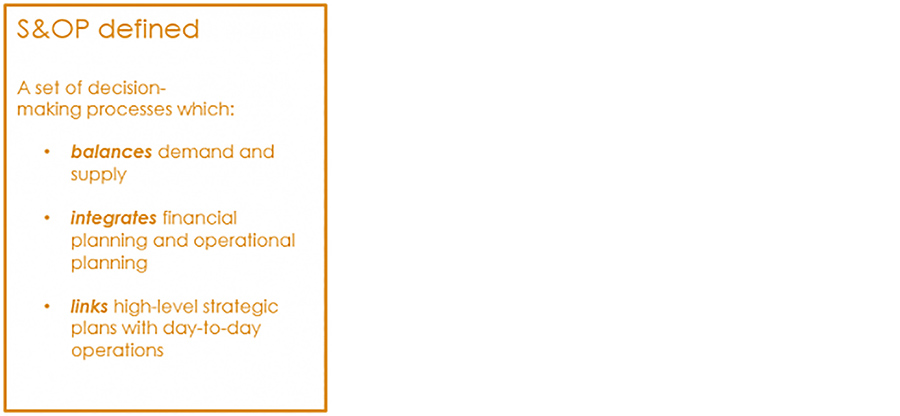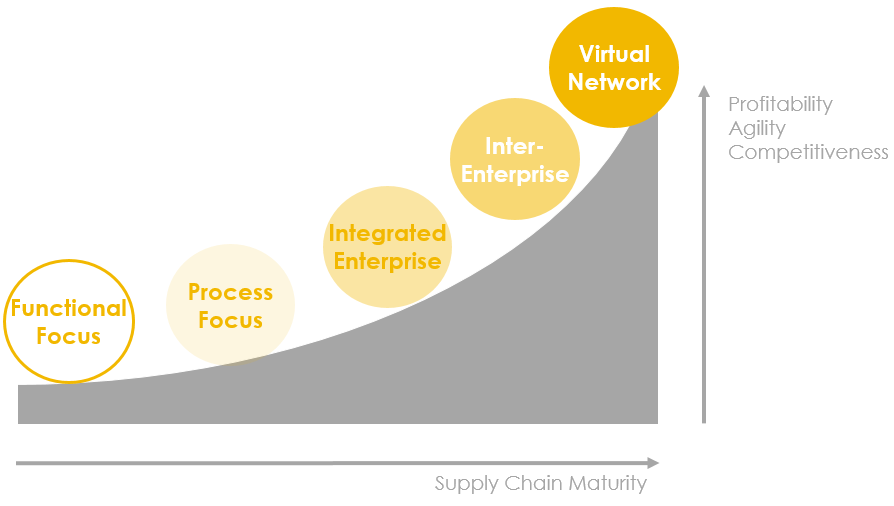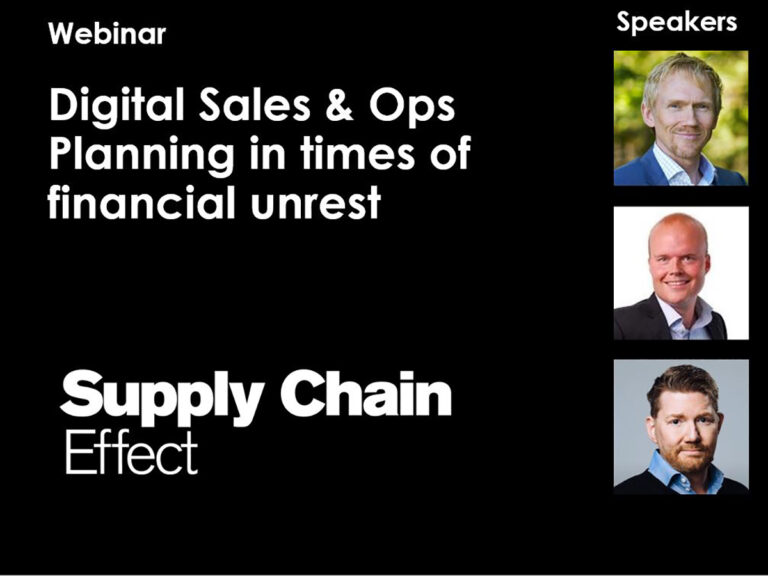The typical ‘5 Step S&OP Process’ includes a Product Management Review followed by a Demand Review, a Supply Review, a Pre-S&OP where the majority of outstanding issues are resolved prior to the Executive S&OP Review. The idea is to create a holistic and fully integrated plan to be executed.
Here is what people usually intend for an S&OP Process to look like:

The S&OP challenge
In reality, key business functions often get stuck in a constant ‘churn’ as they work to resolve competing drivers and functional KPIs. The Inter-functional Pre-SOP cycle becomes a complex series of meetings, trade-offs, sub-optimal decisions (made without the appropriate decision-support and technology), and often power plays, as functions try to work to match supply and demand.
This is increasingly difficult if functional departments have non-aligned objectives, and if the process lacks the ability to test the profit implications of alternate plans.
A recent Gartner study defines ‘5 levels of Maturity’ with regards to the effectiveness of S&OP implementations.

The majority of companies surveyed did not get past Levels 1& 2 in their S&OP maturity – whilst the true enterprise value derived from implementing S&OP is realized at Levels 3 & 4.
Why have so many companies failed to progress further? The primary reasons identified by Gartner are:
- a lack of strategic direction, or poor communication of it;
- a poorly structured and poorly integrated supply chain/business process;
- poor management of ‘lead times’ in the planning cycle (not making the right decisions at the right time);
- conflicting ‘functional objectives’, and very often
- fragmented, isolated systems and excessive use of spreadsheets are not providing the depth of ‘decision-support’ required to effectively plan today’s complex (often international) end to end supply chains.
Moving from S&OP to Integrated Business Planning
While S&OP delivers value to businesses, especially in the area of demand management, it has often been constrained and limited as an operational function and is not an integrated process. Companies are beginning to understand that S&OP plans would have greater value when linked and aligned with overall financial and strategic plans
The main objective of Integrated Business Planning (IBP) is to ensure business focus, alignment, and synchronization across all functions of the business.
First and foremost, IBP maximizes results from an organization’s strategic point of view, while S&OP is usually executed as just a process that attempts to balance supply and demand. Traditionally it has been challenging for S&OP to link day-to-day operations with the strategic objectives of the company.
IBP improves the effectiveness of S&OP processes by working to improve organizational alignment and synchronization across all functions to improve financial performance. IBP represents a holistic model of the company in order to better link strategic planning and operational planning with financial planning.
Key areas where IBP adds more value than pure S&OP:
- Greater financial integration
- Planning to profit
- Inclusion of strategic initiatives and activities
- Improved simulation and modeling
- Easier translation between detail and aggregate
- Improved decision making
- Improved trust within the management team
As one of the world’s leading S&OP authorities, Tom Wallace, describes IBP, “One way to look upon Integrated Business Planning is that you are doing S&OP and that you are doing it well”
Find out More
If you would like to learn more about ways to improve your S&OP contact us today to ask us more. To learn more about Integrated Business Planning, take a look at our IBP white paper.
Get all the latest industry trends, updates & news from Optimity
















